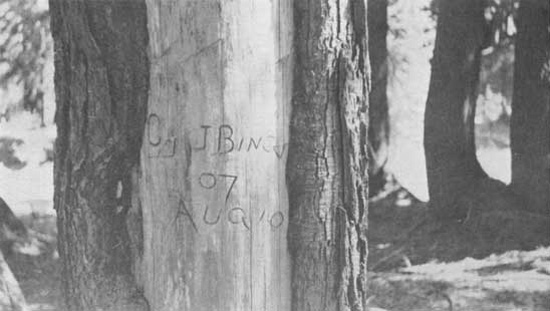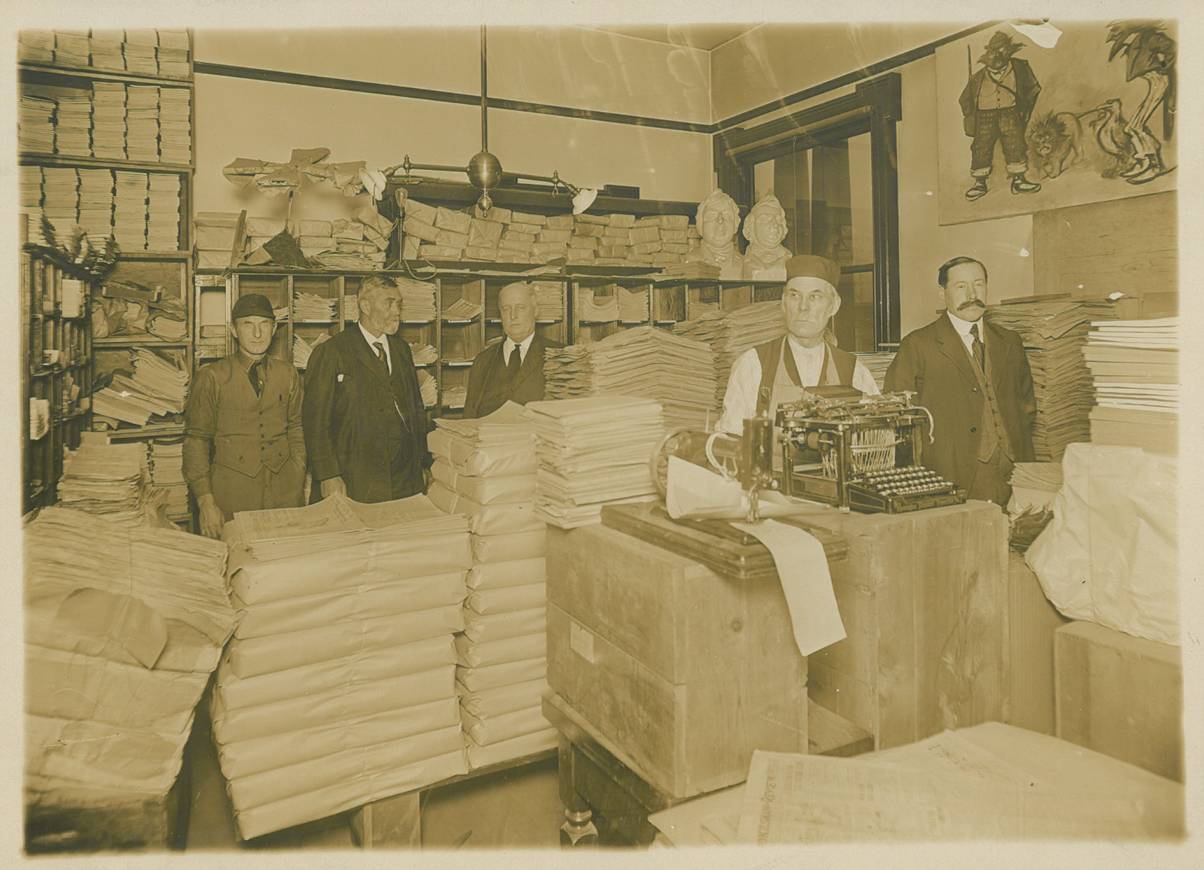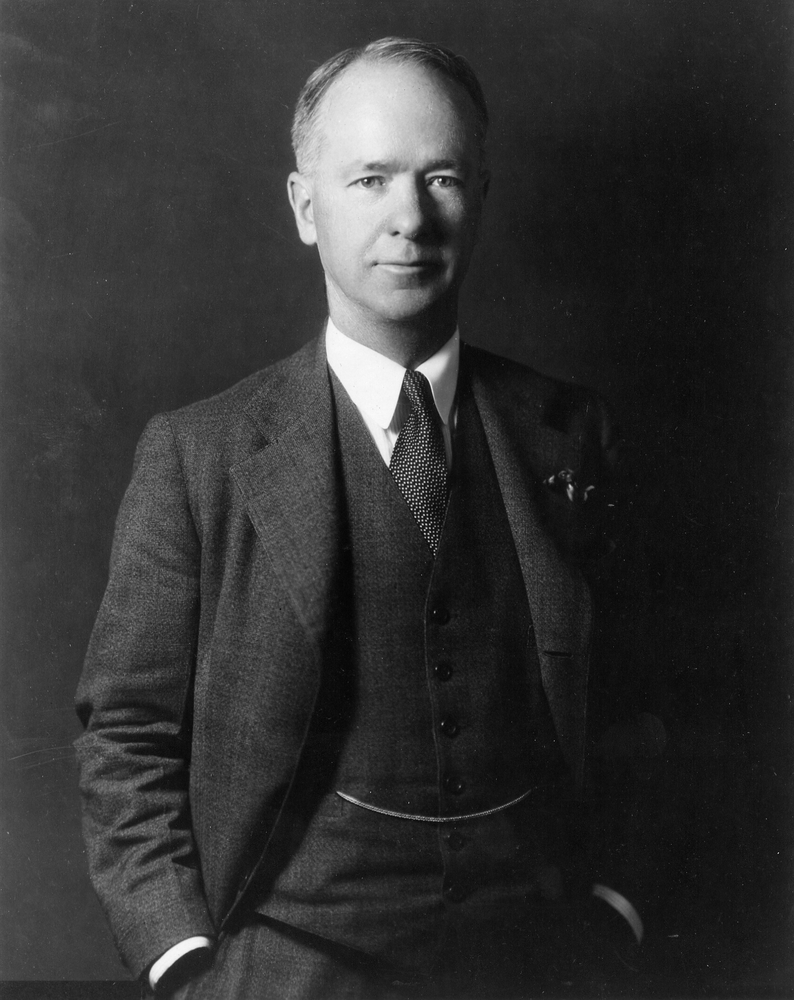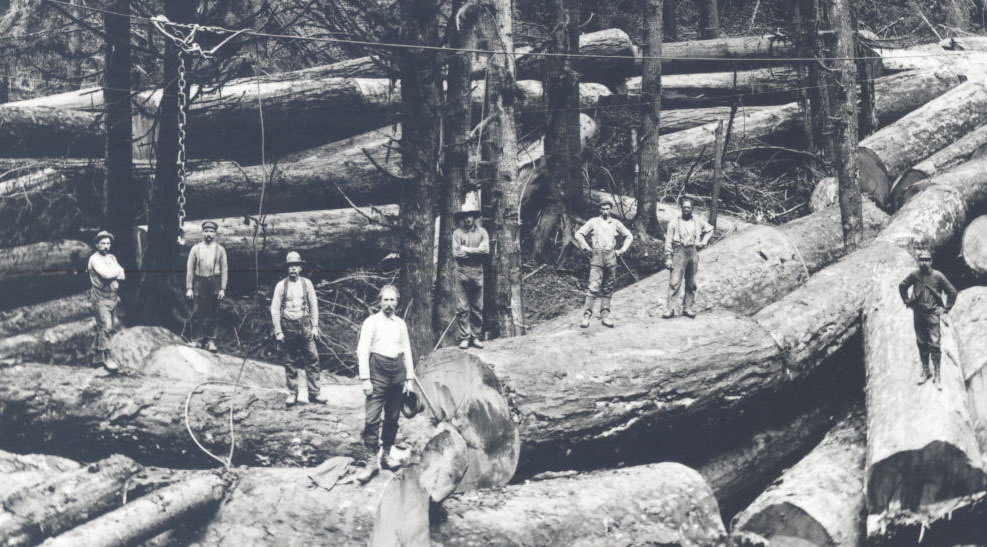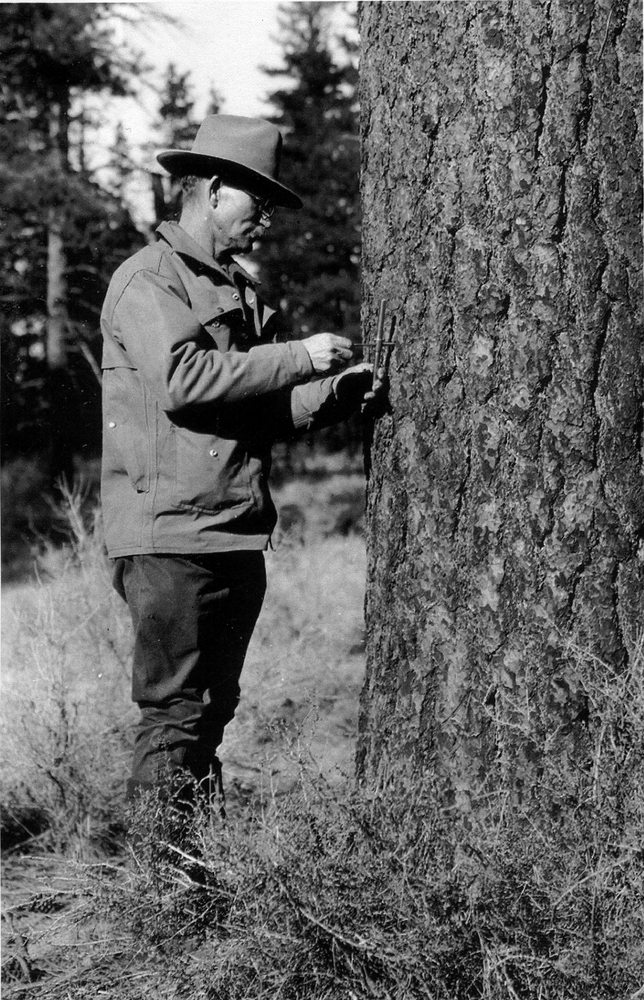David T. Mason was a professional forester, one of the first in Oregon. Almost single-handedly he moved the timber industry from the practice of cutting timber and leaving the land to recover on its own to one based on a model of applied forest science. He also saw the need to make sure that local communities would benefit from scientifically based forestry far into the future.
Mason was born in Newark, New Jersey, on March 11, 1883. He earned a bachelor’s degree in 1905 from Rutgers University and a master’s in forestry from Yale in 1907. Soon after graduation, he began working for the U.S. Forest Service. His assignment was to work on the conditions that were affecting the lumber industry in the inland Pacific Northwest. The results of the study, “Timber Ownership and Lumber Production in the Inland Empire,” were published in 1920.
Mason became a professor of forestry at the University of California in 1915, and two years later he joined the new 10th Engineers (Forestry) assigned to France. After the war, he first worked for the Internal Revenue Service in charge of the timber section and then as a consulting forester in Portland.
In 1923, Mason and Carl M. Stevens started Mason and Stevens, a company that soon became a mainstay of the forestry consultant business in Oregon. Mason and Stevens helped change the industry’s emphasis from simply cutting down trees to professional forestry. The company advocated for increased fire protection, lower taxes on forest lands, and planning for sustained yields in an effort to benefit companies and timber-dependent communities. They remained in business until 1931, when Mason was appointed manager of the Western Pine Association and moved to Washington, D.C.
During the Roosevelt Administration in 1933, he helped write the National Recovery Administration’s (NRA) lumber code (Article X), which required lumber companies to adopt various conservation measures. Mason was also in charge of the Lumber Code Authority and was authorized to enforce Article X until the U.S. Supreme Court ruled that the NRA was not a legal authority under the New Deal legislation in 1935.
Longing to be closer to the Pacific Northwest, Mason returned to Portland in 1936. He formed a new partnership with Donald Bruce, Mason & Bruce. James Girard joined the group, and in 1948 the firm adopted its present name, Mason, Bruce & Girard.
David Mason became identified with the principle of “sustained yield," the idea that timber owners should cut no more timber than they could replant, therefore managing the land for permanent timber production. It was a difficult sell to the timber companies, most of which were following the “cut out and get out" idea of timber harvesting, but the principle found willing converts in the federal government.
In 1937, Mason was instrumental in drafting legislation for the "O&C" Administration Act, which set the principle of sustained yield for managing Oregon and California railroad grant lands in western Oregon. He also helped draft the sustained yield principles for the U.S. Forest Service through the Sustained Yield Forest Management Act of 1944. This act was designed not only to ensure long-term forest growth but also to establish sustained-yield management units in conjunction with affected communities and Forest Service lands.
For several decades, Mason served as a board member of the Forest History Society, which is devoted to the preservation of public and private forestry history and environmental education. He was elected president of the Oregon Historical Society and served in that capacity from 1955 to 1957. After a long and distinguished life and career, spanning ninety years, Mason died on September 3, 1973.
-
![David T. Mason in Santiago, Chile, 1952.]()
Mason, David, in Chile, 1952, bb007131.
David T. Mason in Santiago, Chile, 1952. Oreg. Hist. Soc. Research Libr., bb007131
-
![David T. Mason during tenure with U.S. Army Corps of Engineers.]()
Mason, David, USACE uniform, bb007124.
David T. Mason during tenure with U.S. Army Corps of Engineers. Oreg. Hist. Soc. Research Libr., bb007124
-
![David T. Mason while serving with U.S. Forest Service in Montana.]()
Mason, David, USFS, Montana, bb007109.
David T. Mason while serving with U.S. Forest Service in Montana. Oreg. Hist. Soc. Research Libr., bb007109
-
![David T. Mason near Douglas fir in the Olympic National Forest, Sep. 1908.]()
Mason, David, with tree, Sep. 1908, bb007113.
David T. Mason near Douglas fir in the Olympic National Forest, Sep. 1908. Oreg. Hist. Soc. Research Libr., bb007113
Related Entries
-
![Cyrus Bingham (1870-1937)]()
Cyrus Bingham (1870-1937)
Cyrus James “Cy” Bingham, an early U.S. forest ranger, serv…
-
![Frederick William Cleator (1883–1957)]()
Frederick William Cleator (1883–1957)
Although by training a forester, Frederick William Cleator served as on…
-
![Oregon and California Lands Act]()
Oregon and California Lands Act
The Oregon and California Lands Act, heralded as a forward-looking cons…
-
![Oregon Historical Society]()
Oregon Historical Society
The Oregon Historical Society is a private museum, archival library, an…
-
Thornton Munger (1883-1975)
Thornton Taft Munger was the first director of the U.S. Forest Service'…
-
![Timber Industry]()
Timber Industry
Since the 1880s, long before the mythical Paul Bunyan roamed the Northw…
-
Walter Perry (1873-1959)
Walter Julian Perry arrived in Bend, Oregon, on New Year's Day 1925. He…
Map This on the Oregon History WayFinder
The Oregon History Wayfinder is an interactive map that identifies significant places, people, and events in Oregon history.
Further Reading
Richardson, Elmo. David T. Mason, Forestry Advocate: His Role in the Application of Sustained Yield Management to Private and Public Forest Lands. Durham, N.C.: Forest History Society and Duke University Press, 1983.
Rodney C. Loeher, ed. Forests for the Future: The Story of Sustained Yield as Told in the Diaries and Papers of David T. Mason, 1907-1950. St. Paul: Forest Products History Foundation and the Minnesota Historical Society, 1950.





